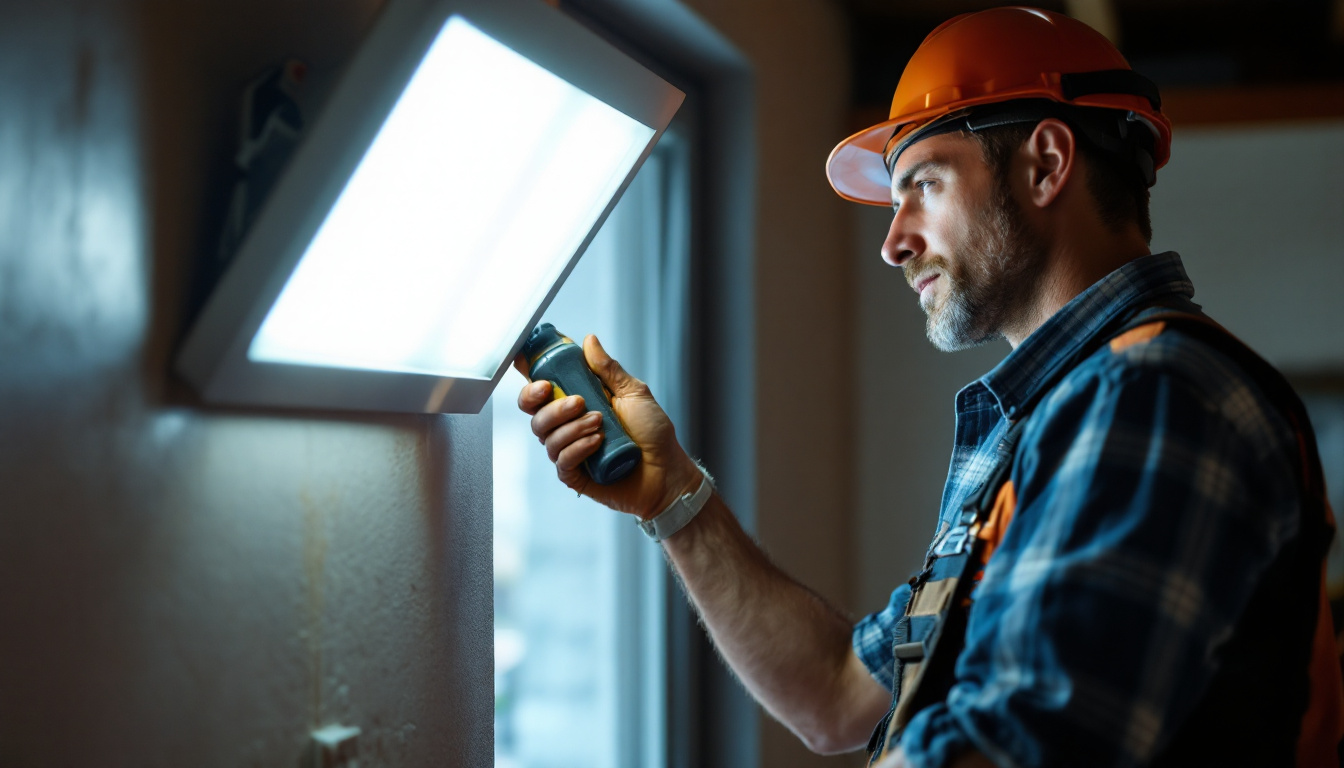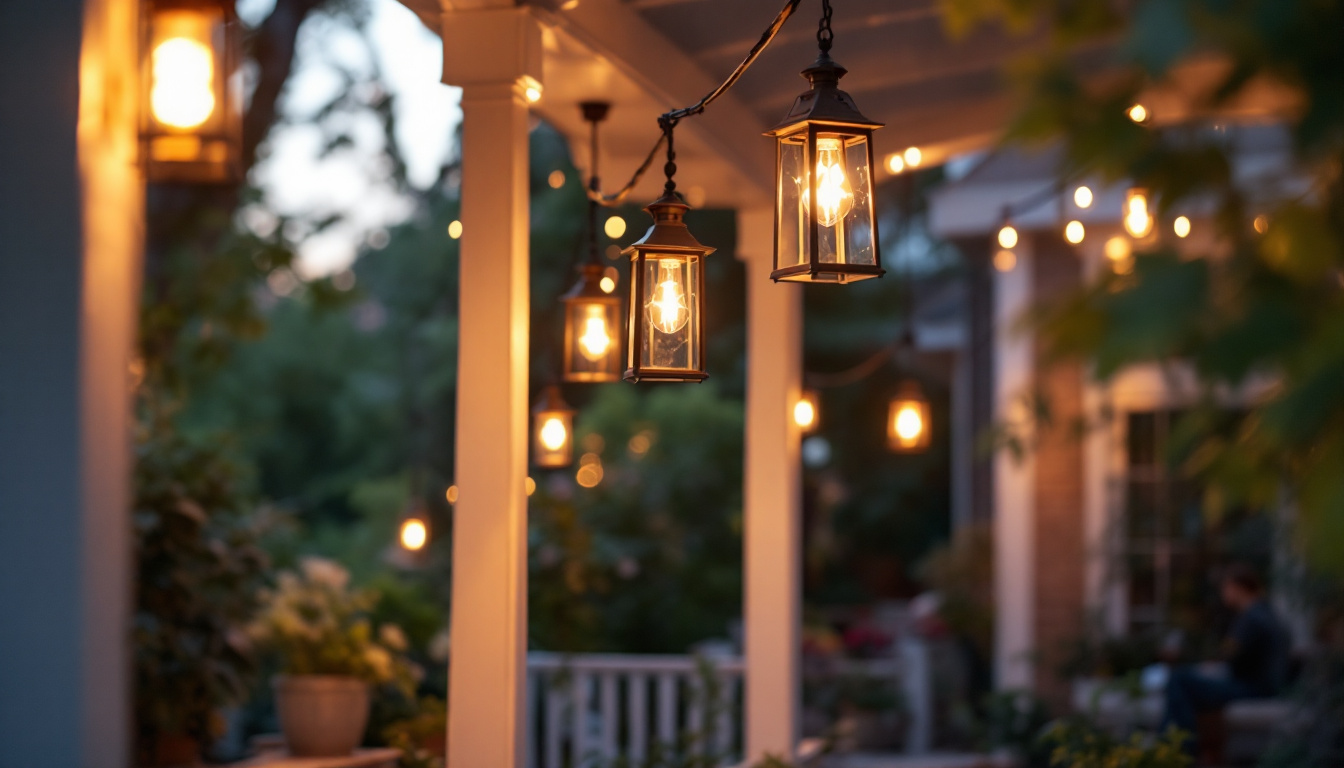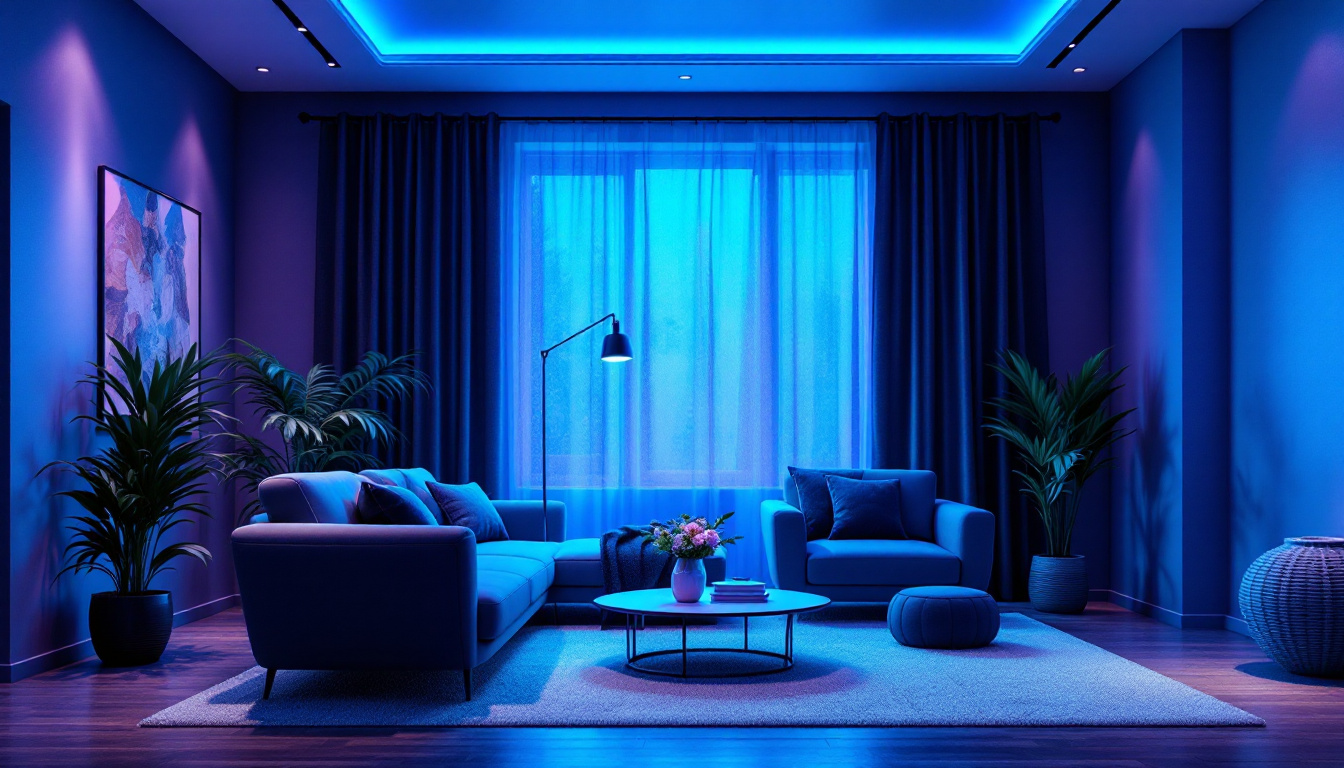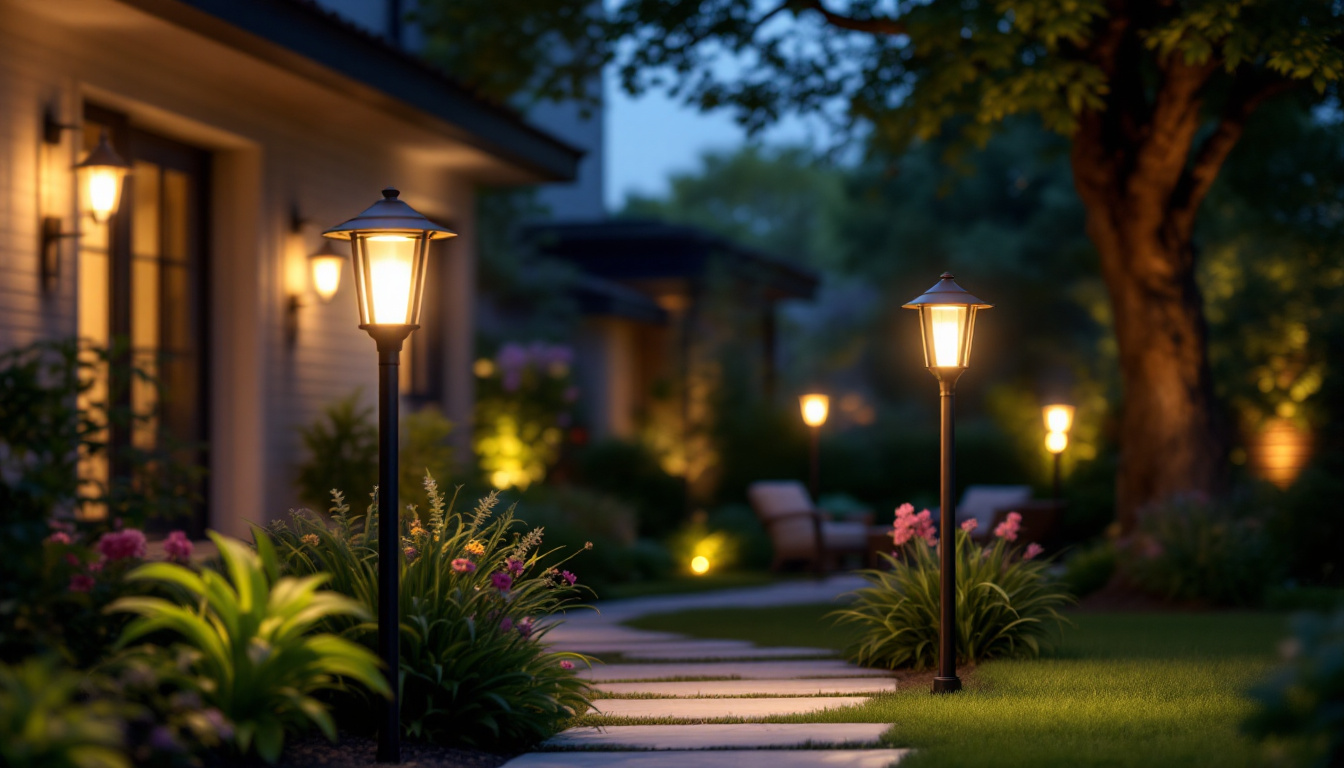
In the world of lighting design and installation, overhead lighting plays a pivotal role in shaping both functionality and aesthetics. For lighting contractors, understanding the nuances of overhead light is essential not only for successful project execution but also for ensuring client satisfaction. This article delves into the significance of overhead lighting, its various types, and how they can be leveraged to enhance a contractor’s business.
Overhead lighting serves as the foundation of any lighting design scheme. It provides general illumination, ensuring that spaces are well-lit and functional. Beyond mere visibility, overhead lights can dramatically influence the mood and ambiance of a room.
For lighting contractors, recognizing the importance of overhead lighting is crucial. It allows them to create spaces that are not only practical but also visually appealing. By mastering the art of overhead lighting, contractors can elevate their projects and set themselves apart in a competitive market.
One of the primary reasons for incorporating overhead lighting is its functional benefits. In commercial spaces, for instance, overhead lights ensure that work areas are adequately illuminated, promoting productivity and safety. In residential settings, they can help define spaces, making it easier for inhabitants to navigate their homes.
Moreover, overhead lighting can be designed to meet specific needs. For example, adjustable fixtures can provide varying levels of brightness, allowing users to customize their environment according to different activities, whether it’s reading, cooking, or entertaining guests. Additionally, the use of smart lighting technology has revolutionized overhead lighting, enabling users to control brightness and color temperature through mobile apps or voice commands. This flexibility not only enhances convenience but also allows for dynamic lighting that can adapt to the time of day or specific events, further enriching the user experience.
Beyond functionality, overhead lighting plays a significant role in enhancing the aesthetic appeal of a space. The right fixtures can serve as focal points, drawing attention and adding character to a room. Whether it’s a sleek modern chandelier or rustic pendant lights, the choice of overhead lighting can transform an ordinary space into something extraordinary.
Lighting contractors should consider the overall design theme of a project when selecting overhead fixtures. This attention to detail not only satisfies clients but also showcases the contractor’s expertise and design sensibility. Furthermore, the interplay of light and shadow created by strategically placed overhead fixtures can add depth to a room, highlighting architectural features or artwork. By thoughtfully integrating overhead lighting with other design elements, contractors can create a cohesive and inviting atmosphere that resonates with the intended style and purpose of the space. The choice of materials, finishes, and even the color of the light can all contribute to a unique ambiance that reflects the personality of the occupants, making overhead lighting an essential component of interior design.
Understanding the various types of overhead lighting is essential for lighting contractors. Each type serves a different purpose and can be used in various applications. Here are some of the most common types:
Recessed lighting, often referred to as can lights or pot lights, is a popular choice for modern spaces. These fixtures are installed into the ceiling, providing a clean and unobtrusive look. They are ideal for creating ambient lighting and can be used in both residential and commercial settings.
One of the advantages of recessed lighting is its versatility. It can be used to highlight specific areas, such as artwork or architectural features, by using adjustable fixtures. Additionally, they come in various sizes and styles, allowing contractors to customize their designs according to client preferences. Energy-efficient LED options have also become increasingly popular, providing long-lasting illumination while reducing electricity costs. This makes recessed lighting not only stylish but also an eco-friendly choice for the environmentally conscious consumer.
Pendant lights hang from the ceiling and are often used to provide task lighting in areas like kitchens or dining rooms. They come in a wide array of designs, materials, and colors, making them suitable for various design aesthetics.
Contractors can use pendant lights to create visual interest in a space. By varying the heights and arrangements of multiple pendants, they can craft a dynamic lighting scheme that enhances the overall design. Furthermore, pendant lights can be an excellent choice for creating a cozy atmosphere in dining areas or cafes. The ability to choose from different bulb types, such as Edison or globe bulbs, allows for further customization, enabling contractors to match the lighting to the desired ambiance. Moreover, the use of dimmer switches with pendant lights can provide flexibility, allowing for adjustments based on the time of day or occasion.
Chandeliers are synonymous with elegance and sophistication. These ornate fixtures can serve as statement pieces in dining rooms, entryways, or grand living spaces. While they are often associated with traditional design, modern chandeliers come in various styles that can complement contemporary interiors as well.
For lighting contractors, the installation of chandeliers offers an opportunity to showcase their craftsmanship. The complexity of these fixtures requires careful attention to detail during installation, ensuring that they are securely mounted and properly wired. A well-installed chandelier can become a conversation starter and a highlight of the space. Additionally, chandeliers can be paired with smart home technology, allowing homeowners to control their lighting remotely or set schedules for different times of the day. This integration of technology not only enhances convenience but also adds a layer of sophistication to the overall lighting design, making chandeliers a versatile choice for modern living spaces.
When planning overhead lighting, several design considerations can help contractors achieve optimal results. These factors can influence the effectiveness and appeal of the lighting scheme.
Understanding the functionality of each room is paramount when designing overhead lighting. Different spaces have different lighting needs. For example, a kitchen requires bright, focused lighting for cooking, while a bedroom may benefit from softer, ambient lighting for relaxation.
Contractors should work closely with clients to assess how each space will be used. This collaboration can lead to tailored lighting solutions that enhance both the functionality and comfort of the environment.
The height of the ceiling plays a significant role in determining the type and placement of overhead lighting. In spaces with high ceilings, larger fixtures such as chandeliers or oversized pendants can create a dramatic effect. Conversely, in rooms with lower ceilings, recessed lighting or flush mounts may be more appropriate to avoid overwhelming the space.
Contractors should also consider how the height of the fixtures will affect the distribution of light. Proper placement can help avoid dark corners and ensure even illumination throughout the room.
Layering light is a crucial aspect of effective lighting design. Overhead lighting should be complemented by other types of lighting, such as task and accent lighting, to create a balanced and inviting atmosphere. This approach allows for flexibility in lighting levels and enhances the overall design.
For example, combining recessed lighting with pendant fixtures can provide both ambient and task lighting in a kitchen. Similarly, using wall sconces alongside chandeliers in a dining room can add depth and dimension to the space.
In today’s environmentally conscious world, energy efficiency and sustainability are more important than ever. Lighting contractors have a unique opportunity to promote energy-efficient overhead lighting solutions that benefit both clients and the planet.
LED lighting has revolutionized the industry, offering a sustainable alternative to traditional incandescent and fluorescent bulbs. LEDs consume significantly less energy and have a much longer lifespan, making them a cost-effective choice for clients in the long run.
Contractors should educate clients about the benefits of LED technology, including the variety of styles and color temperatures available. By incorporating LED fixtures into their designs, contractors can help clients reduce their energy consumption and lower their utility bills.
Smart lighting technology is another avenue for promoting energy efficiency. Smart overhead lighting systems allow users to control their lighting remotely, set schedules, and adjust brightness levels according to their needs. This flexibility can lead to significant energy savings.
Contractors can position themselves as experts in smart lighting solutions by staying informed about the latest technologies and trends. Offering clients these innovative options can enhance their projects and provide added value.
While overhead lighting presents numerous opportunities, lighting contractors also face challenges that require careful navigation. Understanding these challenges can help contractors develop strategies to overcome them.
Managing client expectations is a common challenge in the lighting industry. Clients may have specific visions for their spaces, and it is essential for contractors to align their designs with those expectations while also providing professional guidance.
Effective communication is key. Contractors should actively listen to clients, ask probing questions, and provide realistic options that meet both aesthetic and functional needs. Setting clear timelines and budgets can also help manage expectations and foster a positive working relationship.
Overhead lighting installations can be complex, especially when dealing with existing structures or unique architectural features. Contractors must be prepared to troubleshoot and adapt their plans as needed.
Investing in training and staying updated on the latest installation techniques can empower contractors to tackle these complexities confidently. Additionally, having a well-equipped team can streamline the installation process and minimize potential issues.
Overhead lighting is a fundamental aspect of lighting design that significantly impacts both functionality and aesthetics. For lighting contractors, mastering the art of overhead lighting can lead to greater client satisfaction and business success.
By understanding the various types of overhead lighting, considering design factors, promoting energy-efficient solutions, and navigating challenges effectively, contractors can elevate their projects and stand out in a competitive market. Ultimately, the right overhead lighting can transform spaces, enhance experiences, and contribute to the overall success of lighting contractors.
Ready to take your lighting projects to the next level? At LumenWholesale, we provide lighting contractors like you with the highest quality, spec-grade lighting products at prices that can’t be beaten. Say goodbye to local distributor markups and hello to a vast selection of reliable, high-performance lighting that meets the most stringent industry standards. With free shipping on bulk orders, you can stock up on premium lighting solutions without worrying about hidden fees. Elevate your lighting designs and delight your clients with the perfect combination of quality, affordability, and convenience. Discover the best value in wholesale lighting by visiting Wholesale Lighting at the Best Value today.

Discover the frequent pitfalls lighting contractors encounter when working with 5000K LED lights.

Discover the transformative impact of outdoor hanging porch lanterns through real-world success stories from lighting contractors.

Discover how UV lamp technology is revolutionizing lighting installations by enhancing efficiency and profitability.

Discover the transformative power of outdoor lighting posts in enhancing your landscape’s beauty and security.